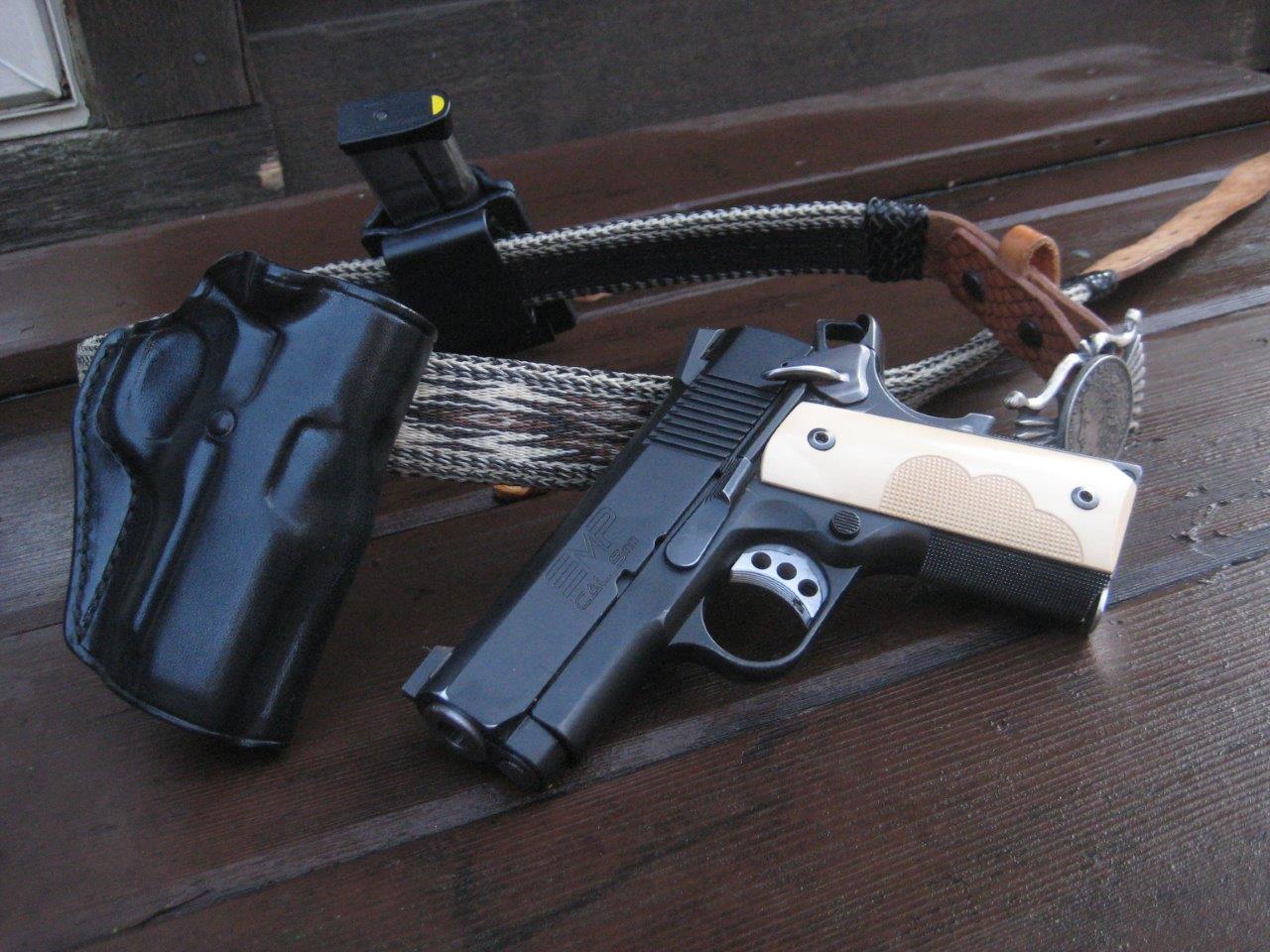
By John Markwell | Contributing writer
Way back in 1977, we had gotten lucky and fallen in with a good crew.
Headed up by Ken Hackathorn, Rick Miller, and Carl Heinrick, the shooters who gathered monthly at Marietta, Ohio’s Fort Harmar Rifle Club were the movers and shakers of practical shooting on the East coast. At the time, it was called Combat Shooting.
Since there were just a very few clubs shooting IPSC style matches in those days, the Fort Harmar Rifle Club’s matches were often a two-day event, with informal shooting on Saturday followed by set up for the Sunday match. Folks attended from all over the east coast; serious shooters all. Saturday night dinner out was limited to a select few and, upon being included, we realized we had to remedy one of our wardrobe short comings; i.e. a real carry gun.
That first Saturday evening, long ago in Ken’s living room, we were introduced to the cult of the Colt Commander and Bruce Nelson’s iconic IWB Summer Special holster. We’ve had a thing for Commanders as carry guns, and concealment holsters, ever since. And so, this is a story about how our carry guns and gear have evolved over time, and where we are today. There is nothing earth shattering here, just one guy’s story of guns and gear. You will, by the way, notice a distinct lack of plastic pistols in this treatise.
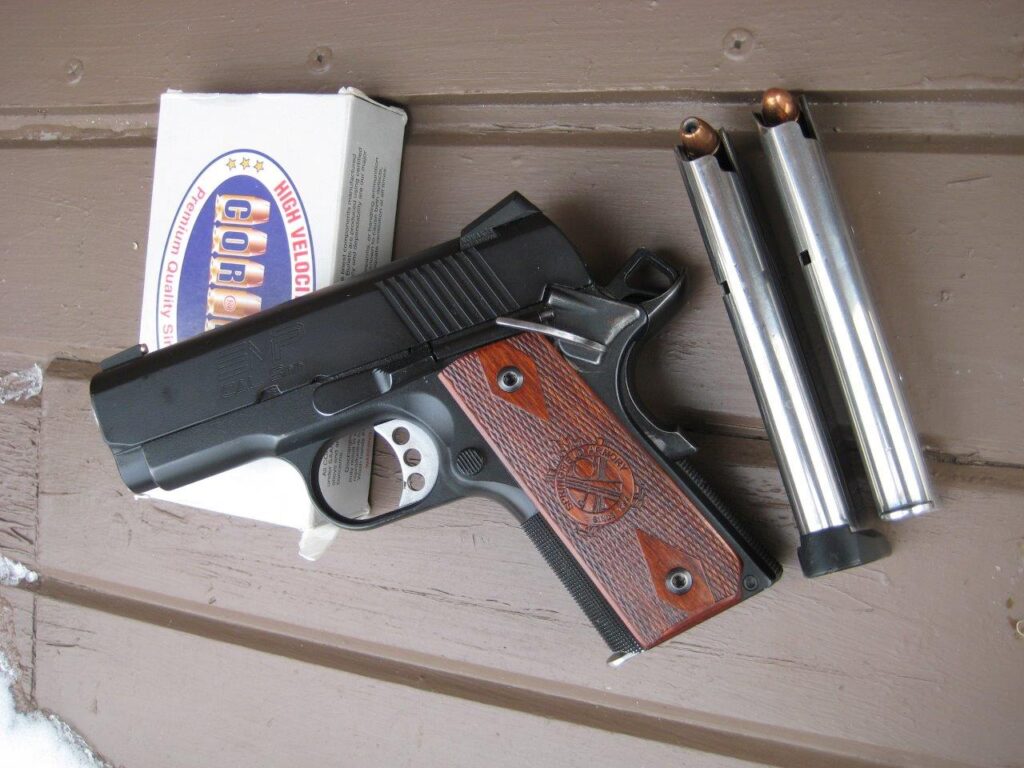
By today’s standards, used Colt 1911 pistols were really pretty affordable in the late ‘70s, generally running in the $100-$150 range. We don’t remember exactly what we paid for our first .45ACP Commander at OGCA in 1978 or ‘79 but do know that we now wish we’d purchased a bunch of them. New ones then were only about $230! For a holster (IWB of course) we ordered up a Model 455 from a relative new maker, Gordon Davis. This holster had the sweat guard that neither the Nelson nor Sparks IWB holsters of the time had. Our wardrobe was complete.
It didn’t take long to figure out that the new Commander recoiled significantly more than a full-sized steel Government 1911 and also that it needed some upgrades; like sights that could be easily seen and a better trigger, for starters. Eventually we added one of the ugly but affective Colt drop-in beavertail grip safeties. Over time, we acquired “a few” Commanders: .45s from Bud Price and Novak and a couple of others. We even home ‘smithed another .45ACP Commander that turned out to be a favorite for a while.
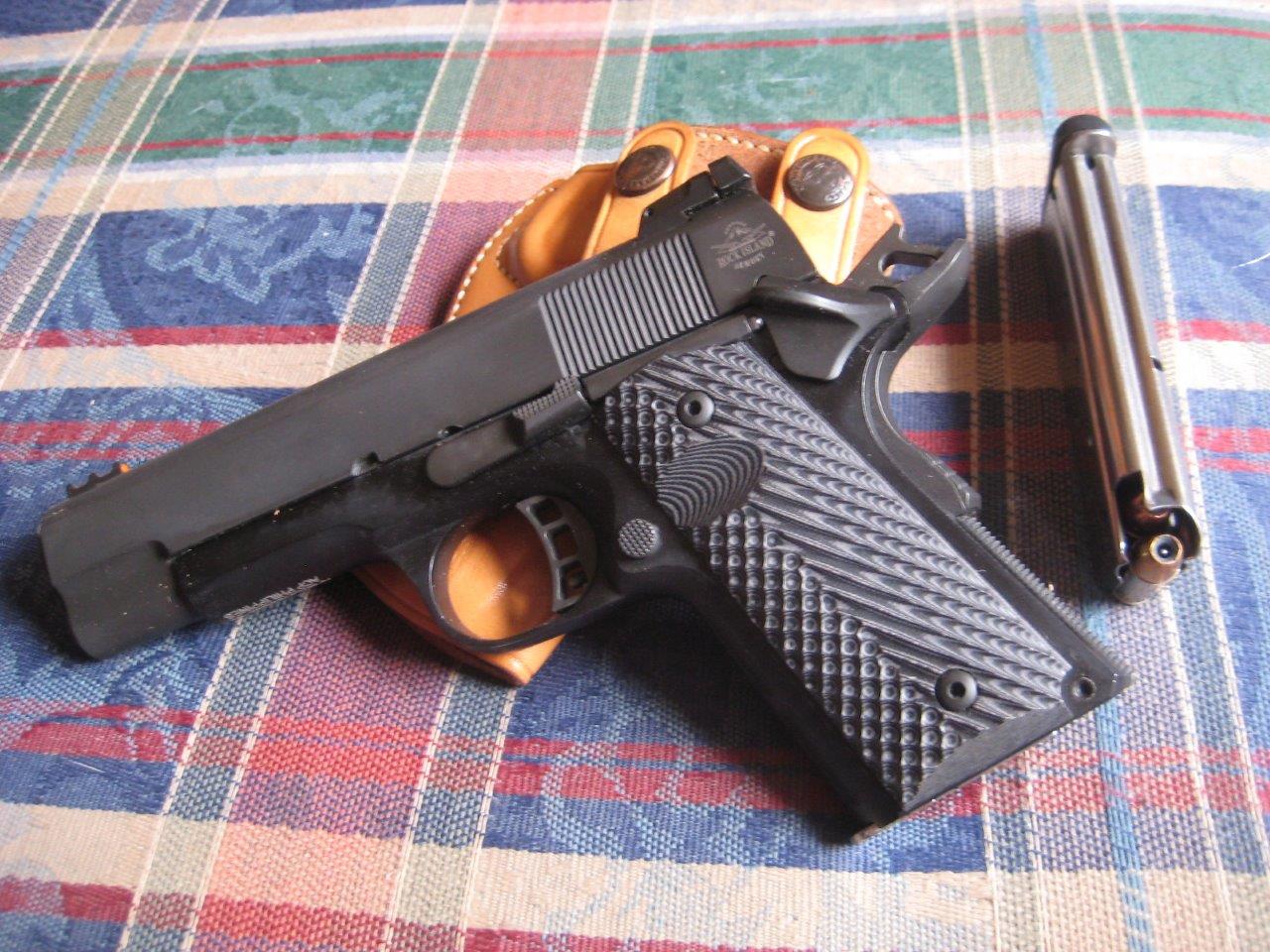
Eventually, as our wrists went south, a 9mm Commander by Kurt Wickman (formerly of Novak’s) was added to the pile. Upon its introduction, we acquired a Springfield EMP. We found this little gun a delight to carry but a bit harder to shoot because of its short sight radius. Also, manipulating the EMP’s reduced size magazines took considerable getting used to.
These pistols were mostly carried in the old Davis Model 455 and an assortment of other IWB holsters; mainly Sparks Summer Specials and several of Galco’s Royal Guards. We found, in our later years, that we preferred to carry more comfortably OWB on the belt; especially during the cooler months. Bruce Nelson’s iconic #1 Professional and its’ many clones have been the rigs of choice ever since we purchased our first Liberty model (for a full sized 1911) from Gordon Davis way back when. And then, in 1985, a Thad Rybka Rhodesian holster was ordered and for most of our needs became our go to rig of choice.
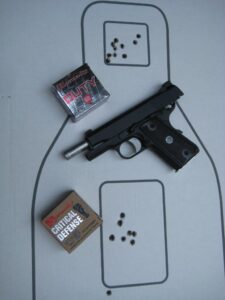
Forty-five years have now passed since that fateful night in Ken’s living room. Our carry gun has continued to evolve and we now have a totally new, but somewhat retro, ensemble to cover most contingencies while going armed.
How we ever missed the convenience of the 1911 CCO pistol concept is a mystery. The only complaint we ever had about carrying Commanders was, that due to our build, the pistol’s butt was hard to hide. Commander’s butts seemed to be always banging on things and made sitting in the truck uncomfortable as the butt of the pistol poked into the seat back torquing the gun uncomfortably forward.
CCO pattern pistols are by definition Officers Model frames with 4.25-inch Commander top units; not guns with 4-inch barrels, but 4.25-inch Commander length. Enter Guncrafter Industries and their Alloy framed CCO in 9mm. We got a plain black 9mm CCO in July 2014 and shot and carried it for almost six months. (See the GunMag, Oct. 2014) In firing 3,000-plus rounds the gun never missed a beat (except for failing to go into battery on one fat headed reload) and the slightly shorter butt of the officers sized frame proved to be eminently concealable and comfortable to carry under all conditions.
The Commander length slide on the CCO, with its six-inch sight radius, made for easier shooting. The Guncrafter U-notch rear and gold bead front sight set up provides a bold and quickly acquired sight picture that is easy for our older eyes to pick up. But the pistol’s short butt was the clincher! One would not think that the approximately 5/8 of an inch shorter grip frame could make that much difference. For this old gun toter it did indeed. Erik Little provided us with one of his renditions of the Bruce Nelson designed #1 Professional and a single magazine pouch to go with this pistol. We stocked the Guncrafter CCO with smooth bark ivory (which we later had checkered by Craig Spegel). When carried on Erik’s 1 ½-inch contoured belt this is just about as classy an EDC outfit as one could wish for. Later, Erik sent us one of his first Selous Scout holsters which is a Rhodesian clone.
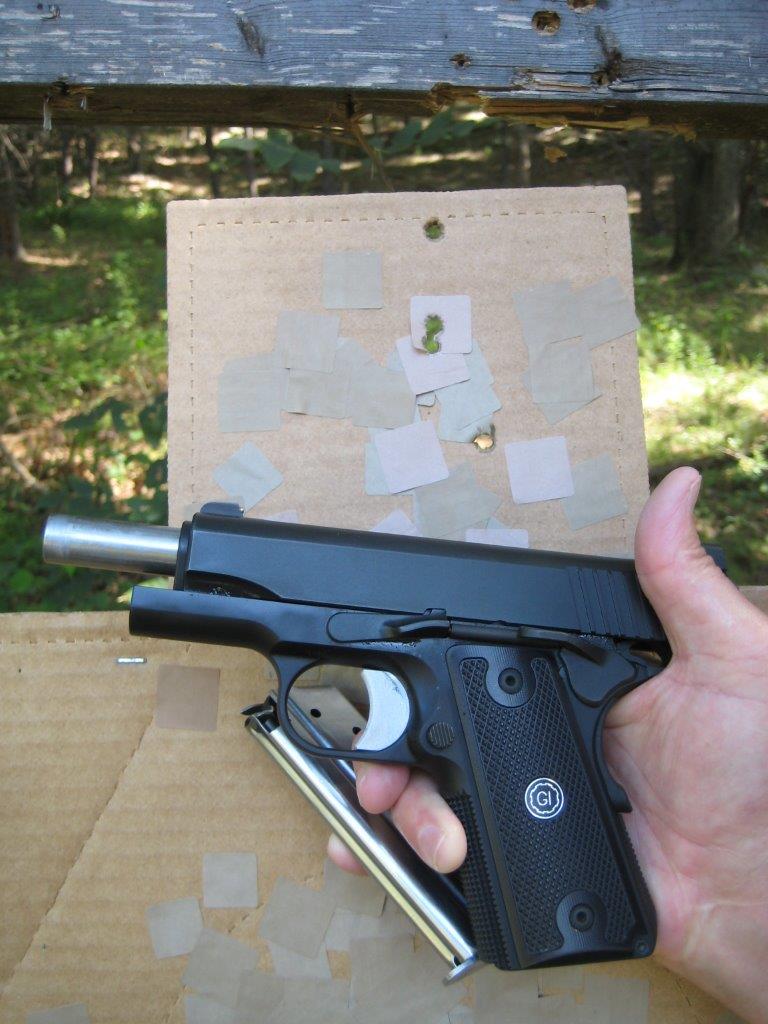
In December 2016, Wilson Combat introduced their Ultralight Carry Commander Compact pistol in 9×19 and we acquired one for testing. Essentially a lightened CCO, the ULC CC is a delight to carry and shoot and again the compact grip frame makes concealment easy. This Wilson pistol now has a place in our battery of carry guns and is most often toted around in either a Rafter-L #1 or Selous Scout holster.
Both the Guncrafter and the Wilson guns are really nice guns that are a tad on the pricy side and we admit having the two of them is a bit of overkill. However, we could not resist purchasing Colt’s Wiley Clapp CCO as, we believed at the time, it was one of the best bargains on the market for a full featured compact pistol for CCW; (TheGunMag Feb. 2017). The Clapp CCO in .45 ACP is a fairly full-featured pistol that is available at the bargain street price of right at $1000, plus or minus a bit. The 25 LPI front strap checkering by Pete Single is outstanding as are the Novak sights. Our example of the Clapp CCO has been exemplary in both function and accuracy. It could use a bit of de-horning but other than that, it’s a great carry gun for the money.
Just when one thinks a journey is over, there is another road to travel. In our case it was instigated, much like the beginning, via our old friend Ken Hackathorn. Ken’s suggestion to take a serious look at the 1911 pistols offered by Dan Wesson started a whole new journey into the CCO world. We have now evaluated three Dan Wesson pistols; an out of production Custom Shop CCO in .38 Super, and two Vigil CCOs; one 9mm and one in .45ACP. All are excellent carry guns; reliable, accurate, dehorned and nicely appointed in every respect. These pistols were, in our humble opinion, the current best buy in the 1911 CCO market place for the money; sadly, the Vigil series guns have been discontinued. We have kept the Super and 9mm, passed the .45ACP on to our son and have honestly sworn off acquiring any more CCOs; at least that’s what we tell the better half.
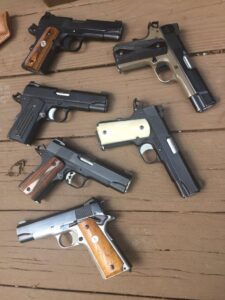
So where are we today on this 45+ year journey? Well, our Springfield EMP has been relegated to BUG matches and our full-sized Commanders are pretty much safe- queens now. For daily carry the 9mm Guncrafter CCO, Wilson 9mm ULC CC, and the Dan Wessons all see pretty regular use as carry guns with the first two certainly having sent the most rounds down range to date. We shoot CCOs almost exclusively in IDPA now. The Wiley Clapp CCO in .45ACP gets carried some and shot less due to its’ snappy recoil and sharp edges. Holster wise we now have quite the assortment that we are still sorting out (they are cheaper than guns) and we haven’t yet found the perfect one; although we’re close. For IWB we still prefer the old Summer Special style and for a belt holster any variation on the original Bruce Nelson #1 design gets the nod followed by Rybka Rhodesians and clones there-of and, most recently, the Sparks 1 AT-RT.
For all the new gun owners out there (and there are a lot of you due to various reasons) there’s a lesson to be learned from this. Picking the right firearm for personal protection may seem like a simple task. But, as one gains knowledge and becomes more demanding, the process should focus on the little things that make a big difference. Comfort, reliability and personal compatibility all intertwine to make a firearm to depend on perfect for you and its designated purpose.
Forty-plus years is a long time to be involved in the pursuit of the perfect defensive pistol. It’s been a long and interesting journey and for us, barring unforeseen technological developments, the end is almost in sight; almost.



